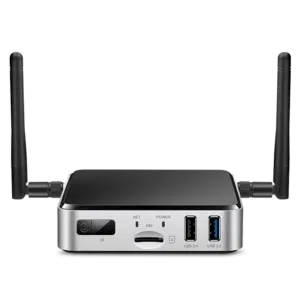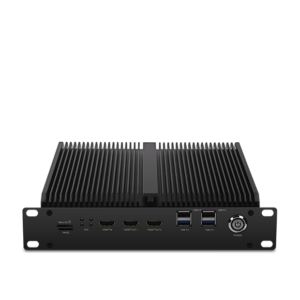AI on Side Products vs. Cloud AI: Professionals and Cons
AI on Side Products vs. Cloud AI: Professionals and Cons
Blog Article
Real-World Programs of AI on Edge Devices
Real-World Programs of AI on Edge Products
Artificial intelligence (AI) is no longer restricted to the region of big, centralized knowledge centers. Because of developments in technology, side units now play an integral position in deploying AI directly wherever knowledge is generated. But what does AI on edge units mean, and exactly why is it making this type of excitement? Here, we'll explore how edge ai hardware operates in the real world through edge products and discover its wide variety of practical applications.

What is AI on Side Devices?
AI on edge devices identifies deploying artificial intelligence methods entirely on products like smartphones, cameras, drones, or IoT sensors. These units do not require use of centralized machines for control information; as an alternative, they accomplish evaluation and decisions domestically, making the procedure faster, better, and frequently more secure.
The "edge" here merely refers to processing performed close to or at the foundation of information generation, as opposed to depending on the cloud. That change is driven by the demands for real-time information running and the need to reduce latency, improve privacy, and reduce bandwidth usage.
Key Real-World Applications of Side AI
1. Intelligent Surveillance
AI-powered cameras designed with skin acceptance, movement detection, and anomaly detection are transforming monitoring systems. Edge products in that domain can analyze movie streams in real-time to identify dubious activities, remove fake sensors, and improve community safety. Like, AI formulas may detect strange actions and alert authorities straight away without the need to deliver video knowledge to a main machine for analysis.
2. Healthcare Tracking
Wearable products and portable medical equipment are leveraging ai m.2 module for managing health knowledge more efficiently. Edge-based AI in products like health trackers and smartwatches watches users' vitals, such as for example heartrate, oxygen degrees, or body stress, in real-time. These methods analyze information locally and provide fast feedback, paving the way in which for faster treatment throughout emergencies.
Beyond wearables, sophisticated medical imaging units designed with on-device AI may identify signs of disorders like cancer, permitting early in the day diagnoses even in remote places without web connectivity.
3. Autonomous Vehicles
Self-driving vehicles are among the most well-known samples of edge AI in action. With sensors, cameras, and LiDAR techniques helping as information options, AI computations take position onboard these vehicles to make split-second decisions. From sensing pedestrians and limitations to moving city roads, edge AI guarantees that the vehicle works reliably and efficiently. The real-time handling convenience of side devices removes the dependence on high-latency cloud systems, ensuring security in life-critical scenarios.
4. Retail Analytics
Side products in retail settings are supporting organizations analyze consumer behavior. Intelligent racks and AI-equipped cameras may detect customer tastes, monitor catalog, and actually modify in-store activities in real time. The information created from they helps retailers make educated choices, improve customer care, and improve supply management.

5. Commercial IoT
Factories and professional plants are adopting side AI to revolutionize their tracking and automation processes. AI-powered detectors on machinery detect potential errors well before they cause expensive failures. Predictive maintenance driven by edge AI reduces downtime, promotes productivity, and guarantees protection on the manufacturing floor.
6. Customized Activities in Consumer Devices
Your smartphone is a primary example of how edge AI personalizes person experiences. Functions such as voice personnel, versatile camera settings, and on-device language translation use real-time AI to react to person needs without sending painful and sensitive information to outside servers. This fosters equally convenience and solitude for the finish user.
The Growing Influence of Side AI
The usage of AI on side devices remains to surge, pushed by industries' raising need for low-latency, real-time processing, and larger knowledge privacy. Its programs are reshaping industries which range from healthcare and automotive to community safety and retail. By getting AI's power closer to wherever information is developed, side units are not just improving efficiency but also showing the limitless potential of innovation in the present linked world. Report this page